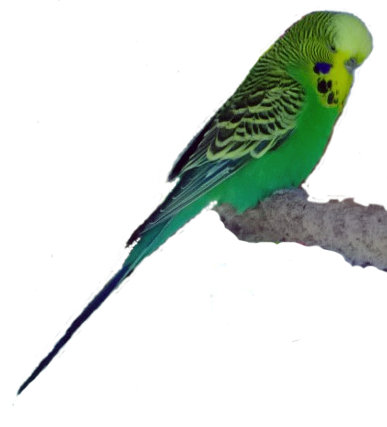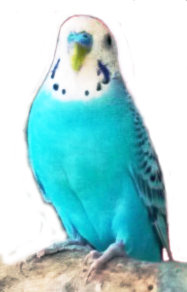This question originally appeared on Quora. 
Answer by Chris Bland, Biomedical Scientist, bird enthusiast
In the past I've used the following example.
Let's say I release 100 parakeets into the wild. 50 look like this:

And the other 50 look like this:

And I release them into a jungle that looks like this:

Now, which parakeets do you think will best be able to hide from predators?
(Most kids will say green one)
So if I go back in a few years, would I find more green, or more blue parakeets?
(most kids will say green again)
And what color will the babies of the green birds be?
(most kids will say green yet again)
Now comes the tricky part. Say we release only blue birds. But once in a rare while a pair of blue birds produces a green baby. Do you think those rare green babies would have an advantage over their blue brothers and sisters (assuming the green birds are equally accepted by their brethren)?
(most kids will say yes or probably)
And if the rare green birds live a little longer (because they can better evade predators) do you think they may have more babies (green babies) than the more common blue birds?
(most kids will agree)
Then after a long time, when many, many generations of birds have come and gone, do you think the green birds may become more and more common?
(most kids will agree)
So, the birds that were the best fit for their environment (in this case the green birds, but in a different environment it could have been the blue) survived in greater numbers and passed on their traits (green color) to their babies, just like I (mom or dad) passed on my (brown eyes, red hair, big nose, etc) to you.
Invariably there will be lots of questions, such as "how could a blue bird have a green baby?" (this could lead to a little discussion of random mutations), or "if blue is such a bad color for parakeets, then where did they come from to begin with?" ( 1. It's not a bad color in every environment, just the one we picked, and 2. It is a rare mutation that was selectively bred for by pet traders, and pet parakeets don't have many predators - besides house cats).
The example is a little artificial, but this is a good way to get into the basic concepts of natural selection and "survival of the fittest" while not getting too bogged down in genetics. I've found using several different examples (brown moths in a white beech forest and white moths in a brown forest is another good example) really cements the idea.